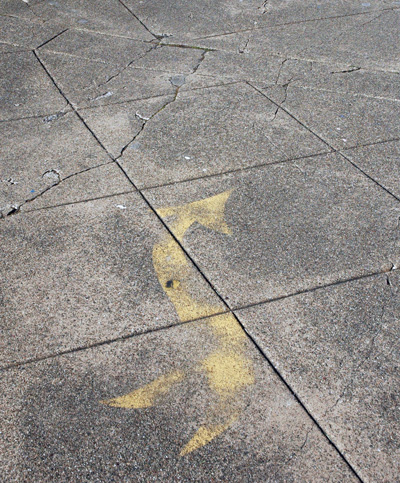
This post about Jaguar’s new Concept XF is a good example of why I love car design — so much thought has to go into every little detail. Next time you’re driving at night, try to recognize cars from the shape of their headlights. You’ll be surprised at how easy many brands are to spot.
In other news, the new Jaguar XK is stunningly beautiful.

Pentagram has designed the $100 laptop’s user interface, codenamed Sugar. The human interface guidelines provides more insight into the design philosophy. Harry Brignull from 90 Percent of Everything has posted some thoughtfully skeptical comments, along with an informative screencast.

Tamara Staples has some beautiful portraits of chickens (click Personal Work and go through the Fairest Fowl category).

The History of the Button blog has a really interesting post on a seemingly smart, but ultimately confusing elevator design. Is it possible for designs to be too clever for their own good?
Dealing with the user’s ingrained expectations is often a dilemma when trying to innovate: do you create something that is novel and potentially confusing, or do you conform to the user’s expectations? Often, an idea will be a clear improvement on paper, but the user’s habits will in practice prove an overwhelming barrier. This is particularly true when the interaction is almost subconscious, as in the elevator example linked to above.
When a novel design provides significant new value, users may be willing to invest some time and mental effort to learn new behaviors. Many people are willing to learn how to use a navigation system, as it makes life so much easier. Nevertheless, designers should work to minimize these switching costs by providing adequate explanations (preferably in context, not tucked away in an obscure manual), adhering to usability conventions as much as possible, and using methods such as progressive disclosure.
Of course, the most revolutionary designs are those that innovate in a way that is so intuitive that they behave exactly as the user expects them to — even though the interaction is completely novel. Automatic transmissions are a good example of this — they are clearly simpler to use than their alternative. Not to use a tired example, the iPod’s scroll-wheel also springs to mind. It remains to be seen if the iPhone lives up to expectations, though usability expert Bruce Tognazzini has high hopes.
I’ve touched on this subject before: elevator algorithms

Follow The Arrow

I usually post pictures on Mondays, but the MLK holiday prevented that, so I figured I’d post something today. This was taken this weekend in San Francisco, in the Marina district. Unedited version.
Amidst all the buzz about the iPhone, I’d like to highlight what I think is an equally innovative phone: Motorola’s beautifully simple Motofone.
Not only is this phone razor thin and beautifully designed, it is also packed full of clever design thinking. Created for developing markets, it has days of battery life thanks to an innovative e-ink screen. The interface is focused on one thing: making phone calls, and special care has been taken to make it useable by people with limited literacy. Best of all, it only costs $50 (compare that to $600 for the iPhone!).
Motorola has a mini-site with some insights into the design process, and the MIT Technology Review tells us more about the screen technology.
I think this is a brilliant move on Motorola’s part. As Chris says:
I don’t want all the crap they are cramming into phones. I just want a phone. A phone that works.
Unfortunately it’s only available in India right now, or else I’d probably buy one.


In 2005, Raphael Julliard had 1000 red monochromes manufactured in China and sold them for 100 euros at a Paris art fair. The pieces, each stamped “Made in China”, are a fun way to comment on the democratization (or commoditization) of art. A friend of mine bought one of these, they’ve apparently appreciated quite a bit since then.

DesignBoom has posted the results of their Ceramics for Breakfast competition. There are some really fun ideas among the first dozen — I particularly like the splashes and speech-bubbles.
Update: speaking of milk splashes, check out this picture.

Sweden plans to be completely independent of fossil fuels by 2020. Denmark isn’t doing too badly either, with some ambitious windfarm projects. Way to go, Scandinavia!
What’s more, motor giant Volvo plans to be the first heavy industry to emit no global warming pollution by the end of this year.









